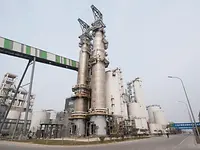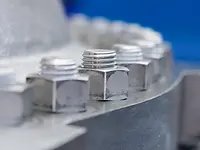Exceptional quality, high yield
Dissolved wood solids, by-products of the pulping reaction which are present in the cooking liquors, cause decreases in pulp strength and viscosity and have a negative impact on pulp bleachability. Lo-Solids cooking technology minimizes these dissolved solids by employing multiple extraction points of spent liquor as the dissolved solids are formed (preventing them from entering subsequent cooking zones), followed by the introduction of make-up liquor and dilution wash water at each point.
The result of Lo-Solids cooking is a uniform distribution of temperature and cooking chemicals, an even alkali profile, minimal peak cooking temperatures, and a minimal concentration of dissolved lignin at the end of the cook. Pulp strength is improved, overall chemical consumption is reduced, and total yield is increased.
Flexibility: a range of solutions for a range of pulp products
The Lo-Solids cooking process from ANDRITZ is flexible by design to accommodate raw material variations while producing pulps of exceptional quality and high yield. By focusing development on the key challenges of the process, ANDRITZ has pioneered a technology that can be adapted to any number of raw materials or pulp products.
Lo-Solids cooking principles have been applied on over 80 systems of various wood species, making different pulp specifications. This includes digesters that swing from softwood to hardwood, or simply change their wood mix over time. Online measurements and controls allow operators to maintain optimum pulp properties by varying process conditions throughout the cooking vessel. Stable chip column movement and efficient washing of cooked chips in the digester vessel ensures that the pulp leaving the digester has optimal properties for further processing later on in the fiberline. Advanced control technologies can be applied to further enhance quality and performance.
Recovered steam technology
While the traditional continuous cooking systems used some form of cyclone to recover heat energy from the digester extraction liquor (flashed steam), modern technology allows for several methods for recovering this energy while improving gas handling safety. Secondary heat balance calculations can be included in the analysis to optimize the overall mill energy balance. Among the heat recovery options are kettle reboilers, vapor reboilers, special heat exchangers, and digester evaporators.
Laboratory simulation and investigation
ANDRITZ can perform realistic simulations of any industrial cooking process, including those modified by customers. Lab studies are a low-risk and low-cost way of determining the impact of changing conditions in raw materials, utilities, processes under consideration, or line optimization. All work with customers in the lab is treated confidentially.









